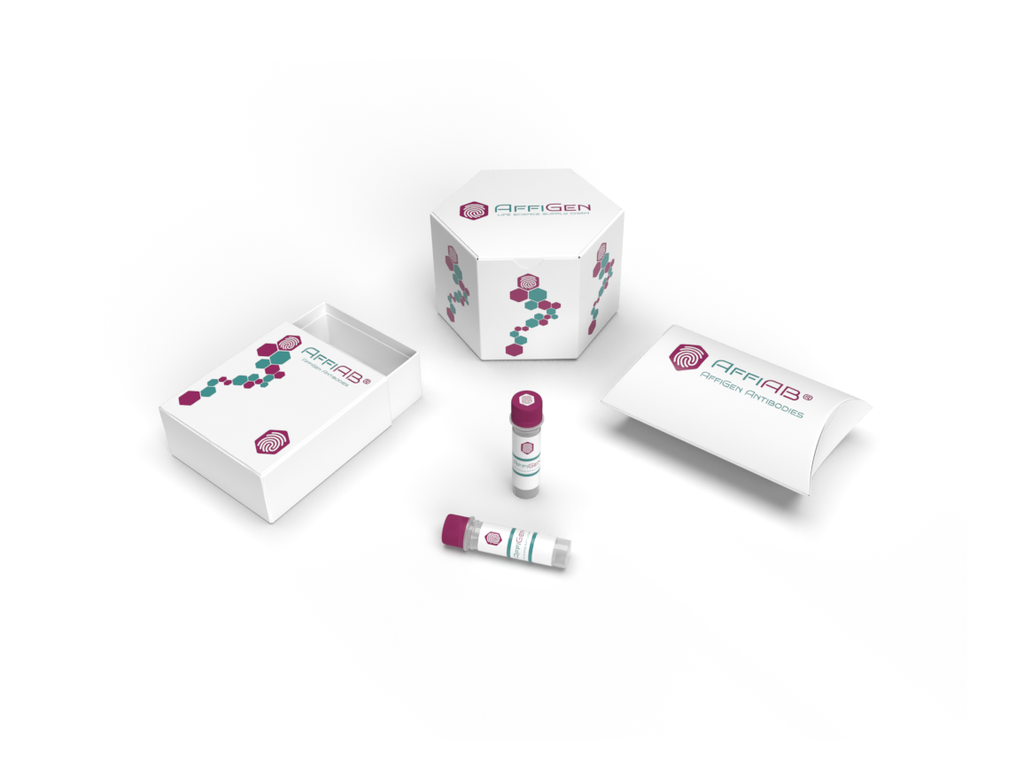AffiAB® Anti-PAR1 Antibody
PAR1 is a transmembrane G-protein-coupled receptor (GPCR) that shares much of its structure with the other protease-activated receptors. These characteristics include having seven transmembrane alpha helices, four extracellular loops and three intracellular loops. PAR1 specifically contains 425 amino acid residues arranged for optimal binding of thrombin at its extracellular N-terminus. The C-terminus of PAR1 is located on the intracellular side of the cell membrane as part of its cytoplasmic tail. PAR1 is activated when the terminal 41 amino acids of its N-terminus are cleaved by thrombin, a serine protease. Once cleaved, PAR1 can activate G-proteins that bind to several locations on its intracellular loops. For example, PAR1 in conjunction with PAR4 can couple to and activate G-protein G12/13 which in turn activates Rho and Rho kinase. Additionally, both PAR1 and PAR4 can couple to G-protein q which stimulates intracellular movement for Calcium ions that serve as second messengers for platelet activation. The phosphorylation of PAR1's cytoplasmic tail and subsequent binding to arrestin uncouples the protein from G protein signaling. These phosphorylated PAR1s are transported back into the cell via endosomes where they are sent to Golgi bodies.
Antibody type
Rabbit polyclonal Antibody
Uniprot ID
SwissProt: P25116 Human; SwissProt: P30558 Mouse; SwissProt: P26824 Rat
Recombinant
NO
Conjugation
Non-conjugated
Host
Rabbit
Isotype
IgG
Clone
N/A
KO/KD
N/A
Species reactivity
Human, Mouse, Rat
Tested applications
WB
Predicted species reactivity
N/A
Immunogen
Synthetic peptide within human PAR1 aa 158-176 (Extracellular domain) .
Storage
Store at +4°C after thawing. Aliquot store at -20°C. Avoid repeated freeze / thaw cycles.
Form
Liquid
Storage buffer
1*TBS (pH7.4) , 0.2% BSA, 50% Glycerol. Preservative: 0.05% Sodium Azide.
Concentration
1 mg/mL.
Purity
Immunogen affinity purified.
Signal pathway
N/A
Recommended dilutions
WB: 1:500-1:1, 000
Molecular Weight
Predicted band size: 47 kDa.
Subcellular location
Cell membrane.
Positive control
Jurkat cell lysate, human kidney tissue lysate, rat kidney tissue lysate, mouse kidney tissue lysate.
